
 Scott Lowe
The Hockey Writers
Scott Lowe
The Hockey Writers
49
Reads
0
Comments
Revamped Capitals Defense Key to Possible Stanley Cup Run
When it comes to the Washington Capitals’ offensive capabilities, there’s no debate that they have one of the most high-powered lineups in the National Hockey League (NHL).
Ranking second in the league in goals per game (3.42) and tied for third in overall goals (236) during the 2019-20 regular season – with the NHL’s perennial top goal-scorer among a group of top-six forwards in which every player recorded between 44 and 67 points – the Caps stack up favorably against anyone.
Caps’ Offense Not a Concern
Even their top defenseman, Norris Trophy-candidate John Carlson, is an offensive threat, having posted a team-best 75 points to lead all NHL blueliners. If you include third-line center Lars Eller and his 16 goals, the Caps had seven players score 15 or more goals and eight tally 39 or more points.
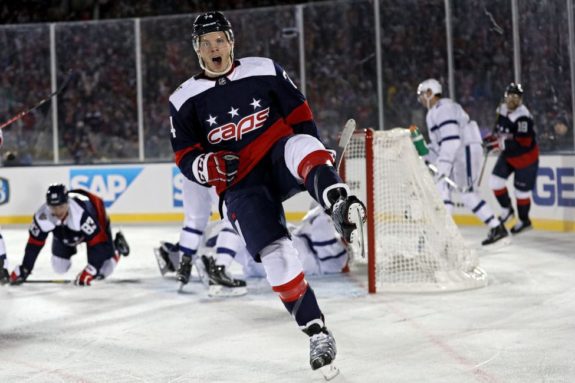
If the Capitals’ power-play unit, which has been perched near the top of the league in proficiency throughout the Alex Ovechkin era, had performed at its usual level instead of ranking 17th at 19.4 percent, you could make a strong argument that Washington has the NHL’s top offensive club.
Related: Washington Capitals Logo History
It is possible, however, that the trade-deadline addition of veteran Ilya Kovalchuk actually pushed the Caps over the top in terms of offensive firepower. That deal forced offseason free-agent acquisition Richard Panik to drop from the third to the fourth line, where for seven games prior to the pause he produced 2 goals and 5 assists while his linemates Nic Dowd and Garnet Hathaway combined for 10 points.
What About Washington’s D?
With Washington’s ability to score goals not lacking, the key question for the Caps entering the reformatted 2020 Stanley Cup Playoffs, as it has been for most of Ovechkin’s career, is whether the team has what it takes defensively to repeat its 2018 Stanley Cup run. Four players – Nick Jensen, Brenden Dillon, Radko Gudas and Jonas Siegenthaler – who weren’t part of the Cup-winning defensive unit are among the team’s current top seven, with Brooks Orpik, Christian Djoos and Matt Niskanen having departed.
On paper, the Capitals’ defensive group appears to be as strong and deep as almost anyone, especially following the addition Dillon at the trade deadline. Not many teams can say they have a player the caliber of Gudas, who was a regular in the Flyers’ lineup for four years before being traded to the Caps, as their seventh defenseman. Gudas has been a plus player each of the past four seasons and was plus-15 with 2 goals and 13 assists for Washington this year.
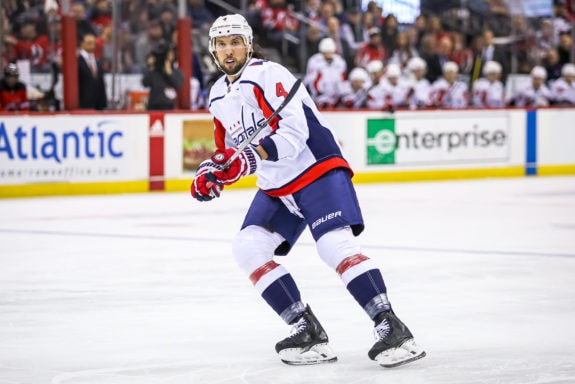
Despite the apparent depth and quality of his defensive unit, head coach Todd Reirden struggled to find chemistry among his pairings all season. Even after Dillon’s arrival, the team struggled to a 4-3-2 record in its final nine games before the season was halted March 12. And over the course of their final 20 contests, the Caps allowed 3.45 goals per game – up from their overall season average of 3.10 – while posting a 7-10-3 record.
During that final 20-game stretch, Washington allowed four or more goals seven times and five or more goals in five outings, while holding its opponents to two or fewer goals on just three occasions. The Capitals posted a 13-7-0 record over the 20 contests prior to that, allowing 3.0 goals per game while holding opponents to two or fewer tallies nine times.
A Struggle From the Start
Those numbers were similar to the team’s defensive showing while sprinting to a 14-4-2 mark in its opening 20 games. Washington allowed 3.05 goals per contest during that run and held the opposition to two or fewer scores eight times.
So while the Capitals’ defensive performance was better earlier in the season, with the team’s offensive exploits allowing them to sit atop the Metropolitan Division standings for most of the campaign, cracks in the armor have been evident all along. Washington allowed four or more goals in 10 of its first 20 contests; it just so happened that the team also tallied four or more goals in 12 of those outings.
It was a performance reminiscent of the free-wheeling Bruce Boudreau days and something that Reirden noticed early on.
Our team defense needs to improve. That’s something that we’ve discussed. I think it’s pretty clear to see that in the last 15 games it’s certainly not where it needed to be.
Before, we were getting away with some wins. And when I answered these same questions, I said we weren’t a finished product despite our record and knew we weren’t.
Capitals head coach Todd Reirden as quoted by NBC Washington, Feb. 12, 2020
Not helping the defensive situation was the performance of goaltender Braden Holtby, who struggled through his worst regular season statistically with a 3.11 goals-against average and .897 save percentage. While Holtby shouldn’t shoulder all the blame given the inconsistent defensive play in front of him, he wasn’t able to steal as many games as he had in the past.
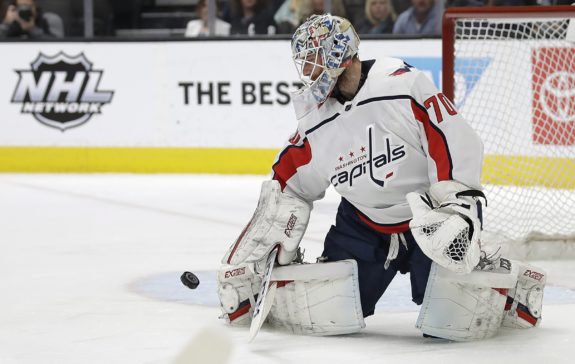
With the Caps surrendering 16 goals in the four games leading up to the pause, Reirden had planned to use the final 13 contests of the regular season to sure things up on the back end and figure out the best blue-line combinations. It was at that point that Gudas was relegated to the No. 7 slot, with the planned pairings for the cancelled March 12 matchup against Detroit looking like this:
Michal Kempny – John Carlson
Brenden Dillon – Dmitry Orlov
Jonas Siegenthaler – Nick Jensen
Reirden Searches for Chemistry
Those are the pairings we have seen throughout Washington’s Phase 3 training camp, with the move of the left-handed Orlov to the right side to play with Dillon getting the most attention.
“I used to play on the right side most of my career. In Russia it’s usually different, lefty plays right and righty plays left, so it’s always how I played growing up and then here they put me on the right side right away, so it’s not a problem.”
Capitals Defenseman Dmitry Orlov during training-camp media session
Orlov said the most challenging aspect of the switch is breaking the puck out quickly from the opposite side, but Reirden is confident he will be able to make the transition and that his ability to move the puck and join the rush will complement Dillon’s stay-at-home, more physical style.
Related: The Worst 1st Overall Draft Pick…Ever
“It’s something that we’ve spent a lot of time talking about, guys playing their offside or not,” Reirden said. “Defensemen are so active now on all teams, whether it’s in offensive-zone play or joining the rush, that sometimes they wind up on the wrong side a lot more than you might totally realize within a game. It’s not as foreign as it sounds, especially in particular for a European player that has spent a lot of time on their offside as a defenseman.”
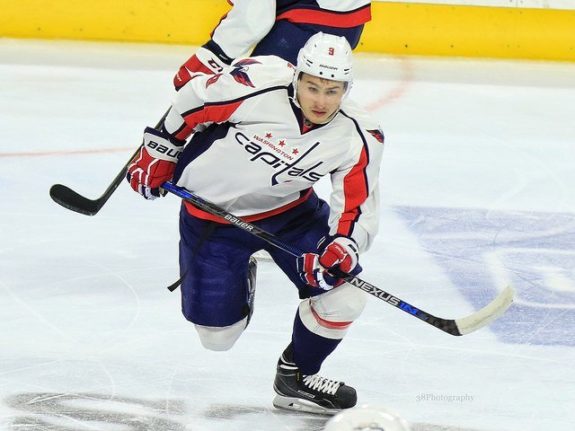
While there are some challenges presented for a defender playing his off side in the defensive zone, there are advantages at the other end of the ice.
“It opens up a number of things offensively in terms of being able to use your one-time shot in offensive-zone play,” Reirden said. “When you’re joining the rush and supporting the rush, you’re stepping into one-timers instead of catching the puck on your forehand and taking a wrist shot.”
That may allow a skilled two-way player like Orlov, who already ranked second among team defensemen in scoring with 27 points, to contribute even more offensively.
“Right now we work every day together during some practice drills and during scrimmages,” Orlov said of playing with Dillon. “We try to talk and communicate after shifts what I want and what he wants to see from me. I think it will help us in the future … Coach is keeping us together right now, so it’s good to have time in camp to get closer, to get to know each other more.”
Gudas the Odd Man Out
The addition of Dillon and his 6-foot-4, 225-pound frame seems to have forced Gudas, who was brought in to provide a physical presence after the retirement of Brooks Orpik, to the outside looking in. Gudas averaged between 17 and 20 minutes of ice time most of the season before seeing that dwindle to 14 and 12 minutes in his last two appearances.
Many observers feel that Jensen had been the most inconsistent of Washington’s defensemen, but his play settled down heading into the break, and Reirden likes his mobility paired with Siegenthaler’s size, reach and ability to play a physical game.
“Jonas (Siegenthaler) is a big, strong guy,” Reirden told reporters during a recent training-camp media session. “His stick has been a big asset for him. He’s really grown the last couple years in that area, using his stick to be able to defend. He’s got a big upside, and in particular I think he’s done a really good job penalty killing for our team.”
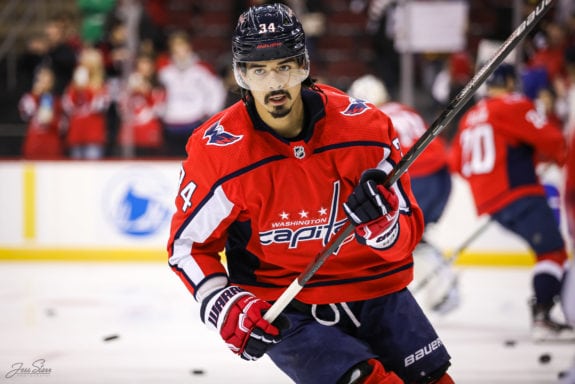
The good news is that if Jensen falters, the right-handed and battle-tested Gudas is waiting in the wings. Not many teams can say they have someone with that kind of experience ready to step in.
Reirden also feels like he’s getting another new defenseman on his top paring alongside Carlson. Kempny returned from the hiatus finally back to 100 percent after a strenuous nine-week workout regimen at home in the Czech Republic. During the regular season, he was still feeling the effects of a severe hamstring injury that forced him to miss last year’s playoffs and all of the preseason training camp.
Kempny Back to Form
Kempny was a key addition to the Capitals lineup at the trade deadline immediately before their Cup run, turning out to be one of the team’s most consistent and dependable blueliners during the postseason. His swift skating and ability to move the puck using his legs or by passing proved to be invaluable. Kempny’s mobility clearly was lacking during the regular season, but he has appeared to be back to his 2018 form during camp.
Related: Blackhawks’ Best Trades of All-Time
A rejuvenated and realigned defensive corps that goes seven players deep with experienced veterans is a luxury any coach would love to have heading into the playoffs. Combine that with a former Stanley Cup-winning goalie who has had time to rest, regroup and focus on his game for a good part of the summer, and the Caps’ best defensive days could still be ahead of them.
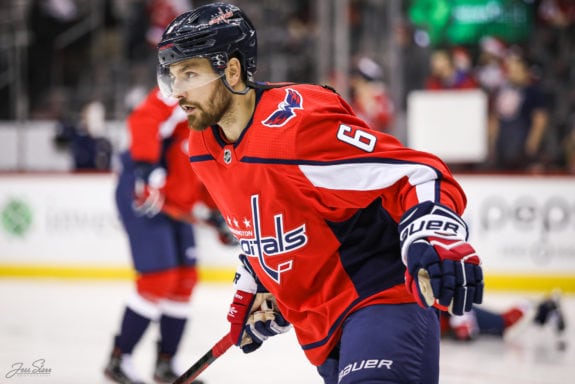
“I like the fact that our team during the year had the best points percentage on the road,” Reirden said. “We’re comfortable on the road. We have a veteran team that’s gone through things like this. I think when we’re going into a situation where we’re well-rested and can focus on hockey, that’s when we were at our best at the beginning of the year. Those are things that are encouraging for me for us to find that level of our game again.”
The post Revamped Capitals Defense Key to Possible Stanley Cup Run appeared first on The Hockey Writers.
Popular Articles

















































 Blackhawks Chicago
Blackhawks Chicago Panthers Florida
Panthers Florida Penguins Pittsburgh
Penguins Pittsburgh Rangers New York
Rangers New York Avalanche Colorado
Avalanche Colorado Kings Los Angeles
Kings Los Angeles Maple Leafs Toronto
Maple Leafs Toronto Bruins Boston
Bruins Boston Capitals Washington
Capitals Washington Flames Calgary
Flames Calgary Oilers Edmonton
Oilers Edmonton Golden Knights Vegas
Golden Knights Vegas Islanders New York
Islanders New York Sabres Buffalo
Sabres Buffalo Red Wings Detroit
Red Wings Detroit Senators Ottawa
Senators Ottawa Lightning Tampa Bay
Lightning Tampa Bay Flyers Philadelphia
Flyers Philadelphia Devils New Jersey
Devils New Jersey Hurricanes Carolina
Hurricanes Carolina Blue Jackets Columbus
Blue Jackets Columbus Predators Nashville
Predators Nashville Wild Minnesota
Wild Minnesota Blues St. Louis
Blues St. Louis Stars Dallas
Stars Dallas Jets Winnipeg
Jets Winnipeg Mammoth Utah
Mammoth Utah Sharks San Jose
Sharks San Jose Canucks Vancouver
Canucks Vancouver Ducks Anaheim
Ducks Anaheim






